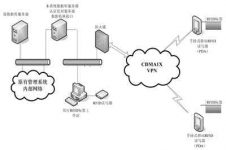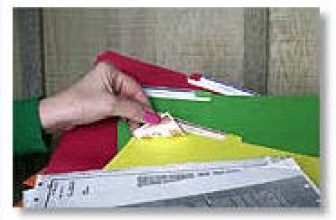
The Application of RFID in the Management Innovation of Radio Stations
[ad_1]
With the rapid development of my country’s radio industry, my country’s radio management work has undergone great changes. Infrastructure construction has been planned to a certain extent. In particular, the monitoring and testing departments have introduced a number of advanced equipment, which has basically reached the international advanced level.
However, the current management of radio stations in my country is not advanced enough, and the monitoring methods of radio stations are relatively backward, which cannot fully meet the needs of the rapid development of radio services. There are also some shortcomings in the supervision methods and mechanisms, and the lack of effective technical means has caused the current phenomenon of unauthorized use of radio stations to be very serious. According to incomplete statistics, more than 3 million domestic walkie-talkies are sold each year, while the number of newly registered walkie-talkie users by the Radio Regulatory Agency is only more than 200,000. There are also phenomena such as unauthorized use by individual telecom operators and concealment of the number of radio base stations. At present, the problem of private radio stations seriously interferes with the normal order of radio management.
Although the national, provincial, and municipal radio management agencies try their best to solve the problem, there are still technical difficulties. In response to the above-mentioned management problems, Oriental Botai Radio Spectrum Technology Research Institute introduced the innovative concept of RFID station management, and realized the management of a single station by using the characteristics of RFID.
Introduction to RFID Technology
As an emerging automatic identification technology, RFID (Radio Frequency Identification) has developed rapidly at home and abroad in recent years.
Radio frequency identification is a non-contact automatic identification technology that emerged from the 1990s. It uses radio frequency for non-contact two-way communication to automatically identify the target object and obtain related data. It has many advantages such as high accuracy, strong adaptability to the environment, strong anti-interference, and fast operation. In the current commonly used automatic identification technology, the cost of barcode and magnetic card is low, but they are easy to wear, and the data storage capacity is small; the price of contact IC card is slightly higher, the data storage capacity is large, the security is good, but it is also easy to wear , Short life; while the wireless radio frequency card realizes contact-free operation, convenient application, no mechanical wear, no visible light source, good penetration, anti-pollution ability and durability, and low environmental requirements, long reading distance, support Write data, can be reused, and use anti-collision technology.
RFID radio station management system
2.1 Principles of RFID radio station management system
The RFID station management system developed by Orient Botai Radio Spectrum Technology Research Institute can realize the management of each station (as shown in Figure 1).

Figure 1 Principles of RFID radio station management
System data adopts centralized management, and the local database server adopts a dual network card structure, one of which is connected to the original management system network. Through this interface, the data conversion program of this system can periodically convert the data in the original database server to the local database server. At the same time, the second network card of the local data server is connected to the local network, and the corresponding RFID is issued on the network. Label workstation. The workstation is connected with an RFID reader, which is used to issue and write RFID tags, and perform necessary encryption of data.
The staff of the radio management department uses a handheld RFID reading device to non-contact read the RFID on the on-site radio transmitting device. After obtaining the decrypted related device information, the network passes through a firewall with China Unicom’s CDMA 1X network or China Mobile’s GPRS network establishes a virtual connection private network (VPN). If necessary, you can directly connect to the authentication comparison server for device information query. The authentication comparison server will return the query results to the staff’s handheld device so that the on-site personnel can make judgments based on the actual results.
2.2 Composition of RFID radio station management system
The RFID radio station management system includes six parts: electronic tags, handheld RFID reading devices, authentication and comparison servers, RFID writing workstations, database servers, CDMA 1X or GPRSVPN private networks.
(1) RFID electronic label
Considering factors such as comprehensive performance and price, the system uses electronic tags that work at 13.56 MHz. The chip is TI’s TAGIT and PHILIPS’ Icode2, and the internal space is 256 bytes (expandable to 512 bytes), which can save most of the relevant information about the radio transmission equipment, including equipment code, equipment unit name, address, equipment model , Transmitting power, frequency information, etc. The stored data is encrypted by DES to prevent third-party RFID reading and writing equipment from reading or rewriting.
The label is very small, and the label can be pasted on the managed device. After pasting, the label cannot be completely torn off. If the user maliciously removes it, it will be completely and permanently damaged.
(2) Handheld RFID reading equipment
The system adopts a handheld RFID reading device that can read and write at 13.56 MHz. It is equipped with a CDMA 1X module or a GPRS module. It can be directly connected to the application server in the radio management department. The reading device has an LCD screen that can display the read Related information, at the same time, the device contains decryption and decompression algorithms, which can completely read the encrypted label content issued by the radio management department. At the same time, the software has a self-protection function. If the reading device is accidentally lost, the application server can remotely issue a “remote kill” command to automatically destroy the decryption and decompression program to prevent the algorithm and key from leaking.
In this solution, a variety of handheld terminal equipment options are provided. The technical parameters of the main product 6305 are as follows:
* Multiple functions to realize fast data collection and information processing.
Integrate handheld information processing technology,smart cardTechnology, SAM card technology and laser bar code scanning are combined to form SAM card reading and writing, field data storage and other functions. Data can be stored in the machine, or through GPRS/CDMA, W-LAN, Zigbee, infrared and 232 Interface to transmit the collected data to the wireless data center receiver or PC.
* Convenient to use, safe and reliable, secondary development, easy to maintain.
With a clear LCD screen and programmable buttons, through the built-in encryption algorithm SAM card and MEMORY real-time hot backup, the data can be restored when the machine is damaged; an integrated environment for the development of the machine is provided to facilitate the development of related application software , So that system programs and applications can be upgraded.
(3) Authentication and comparison server
The authentication comparison server compares the data transmitted by the remote handheld device with the server data, and returns the relevant results to the handheld device. It also has some management functions, including the login management of the remote device, the query authority setting, and the remote Remote kill and other functions.
(4) Label writing workstation
The writing workstation writes the original data of the relevant radio transmission equipment in the database to the RFID tag, and at the same time compresses, encrypts and digitally signs the data to ensure that the data in the RFID tag will not be read or tampered with by third-party equipment.
(5) Database server
Save the relevant data of the latest radio transmission equipment, which comes from the local database system or other relevant application systems, and is the basis for equipment data comparison.
(6) CDMA 1X or GPRSVPN private network
This system completes on-site real-time data tracking and comparison by renting the wireless data service of China Unicom or China Mobile. By renting a dedicated VPN network of China Mobile or China Unicom, the possibility of exposure to the public network is avoided. The VPN network uses a SIM card for VPN authentication, and implements necessary port mapping and other functions through a firewall to ensure the security of the network system.
Innovation of RFID Radio Station Management System
The only sign of traditional radio station management is the station application number, that is, having multiple devices under one radio license number. For example, some units have licenses for primary and secondary transmitters, and only have one radio station. Standard radio also has the phenomenon of multiple devices with one license. For example, there is a phenomenon in which thousands of PHS stations share one license. This situation makes it difficult to obtain evidence on site, and it is impossible to distinguish between legitimate radio stations and unauthorized stations.
And each RFID tag is unique in the world, so even if the station uses the same license, it is easy to distinguish. The RFID tag has enough storage space to store all the information of the approved radio station on the chip. The staff can quickly distinguish between legal and illegal radio stations on the spot, which is convenient for timely supervision.
RFID is a flexible electronic tag that can be easily attached to approved equipment, which realizes the integration of license and equipment, and has obvious advantages over paper licenses. Through the establishment of a local independent RFID station data network, especially through a remote real-time network connection, remote monitoring of each radio station can be realized.
The RFID radio station management system can realize on-site data collection and verify the legitimacy of the station. The system can also be used in radio station inspection procedures to establish a radio equipment inspection database, which can be tested and compared during the annual inspection. The system has a variety of practical extension functions, can be connected with the original database, realize real-time information sharing, can solve the basic needs of radio management at the grassroots level, and can be expanded and developed according to needs, which can be regarded as an innovative technical means for radio station management.
[ad_2]




